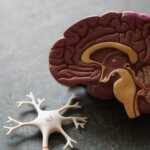When I wrote about superconductors and called them “the technology that will change everything”, I couldn’t help but feel an itch in the back of my mind — a vague notion that graphene and superconductors had a deeper relationship that hadn’t yet been explored. Both were materials which held a rightful fascination in the world of physics, each for their own extraordinary set of properties.
At times graphene had even been referred to as the most remarkable substance ever discovered. It was a honeycomb pattern of carbon exactly one atom thick. The thinnest material known to man, and yet 150 times stronger than steel, flexible, and electrically conductive. Superconductors, on the other hand, are materials that would solve the major problem of heat loss during electrical transmission across wires. They show no electrical resistance. For us, this would mean computers that are smaller and yet more powerful, a revolution in the fields of medicine and transportation, and energy savings worth billions of dollars each year. Superconductors may even be the key to sustaining powerful fusion reactions that could power the world.
But what if with some clever manipulation you could marry both these powerful materials? The result is a new field of science called “twistronics”, and yet one which has already attracted a lot of attention and new research. What amounts to a few dozen groups working in the field today could soon become hundreds. The researchers themselves admitted that they could never have anticipated the enormous potential twistronics have shown.
The name for twistronics comes from the “magic angle” at which two sheets of graphene need to be twisted: 1.1 degrees of misalignment with one another. One sheet of graphene will sit on top of another but in a way that will make it slightly off-center by 1.1 degrees. This is called twisted bilayer graphene. Although scientists had predicted in 2011 that strange new properties could arise at the magic angle, this misalignment is not easy to achieve. Layers of graphene, like magnets, want to click into certain positions when they’re near one another. When the graphene sheets are forced into other positions they are prone to defects and deformations which could stunt their exotic properties.

In order to minimize these defects, researchers may start with ultra-clean sheets of graphene which they then carefully press together and cool to temperatures near absolute zero. Observations take place in a vacuum to ensure there is no contamination from outside sources. After several meticulous trials, these twisted sheets began to show properties uncharacteristic to graphene. Graphene usually exhibits electrical conductivity, though some twisted sheets began to show properties of an insulator when exposed to an electric field. Increasing these electrical fields resulted in the exact opposite — the graphene was showing properties of a superconductor.
Here was a material that could be manipulated into two opposite extremes, bridging the world of insulators and conductors and allowing us insight into the mystery of superconductivity.
A paper in Nature followed in 2018 detailing how twisted bilayer graphene had become superconducting. The results were replicated in many labs, though the original discovery came from a lab at MIT. Twisted graphene sheets are significantly cheaper to study and replicate than exotic ceramics or carbon-sulfur compounds that require intense pressures to attain superconductive properties. The twisted graphene does still require temperatures lower than -450° F (-268° C) in order to reduce the movement of atoms and allow for electricity to flow through the material undisturbed. These slowed down electrons tend to have stronger interactions with one another, sometimes pairing up to form a superfluid in twisted graphene that is the distinct marker of a superconductor.
But the point was never for these graphene devices to serve a practical purpose themselves— graphene is not an easy material to produce at a commercial level. The point of this research is to enable scientists to better understand the phenomenon of superconductivity and how we can harness it to our advantage. Twistronics is a playground for understanding quantum phenomena and manipulating graphene’s many properties: not just conductivity but also thermal, optical, and magnetic properties as well. Already this has led to the observation of a new phase known as orbital magnetism. During orbital magnetism current forms at the edges of a device instead of at the center.
Such a playground may be our path to creating the world’s first superconductor at room temperature and room pressure. A holy grail of physics. It could help usher in quantum computers by making their parts easier to fabricate, as well as revolutionize the world in all the ways mentioned before.

To get there will take more experimentation. Different labs across the world are focusing on different approaches. Some are twisting stacks of 3 or more layers of graphene. Studies have suggested that four layers of graphene are more sensitive to magnetic and electric fields than their 2-layer counterparts, making it easier for researchers to tune and observe their exotic behavior. Other teams are experimenting with smaller angles to try to find even more exotic properties while others still are focusing on ways to reduce the strain of pressing the graphene sheets together in order to avoid deformation in the material. Some of these approaches are speculated to create superconductors at higher and higher temperatures, a stepping stone on the way to room temperature devices.
But even if twistronics never delivers the sought-after superconductor of our dreams, it may still make electronics cheaper and more efficient by offering a way of hosting electric circuits on sheets of graphene instead of on the highly complex chips we use now. It may also lead to the development of new real-world technology in the realm of quantum sensing, computing, and photonics. And twistronics is not exclusive to graphene. Any number of materials can reveal unexpected properties — specifically electrical — when stacked and twisted at certain angles.
The field is young, and promising. Many of our greatest breakthroughs come not from premeditation but from hunches and experimentation. In the world of science play and progress can often be one and the same; this may just become one of the greatest testaments to that notion.





























